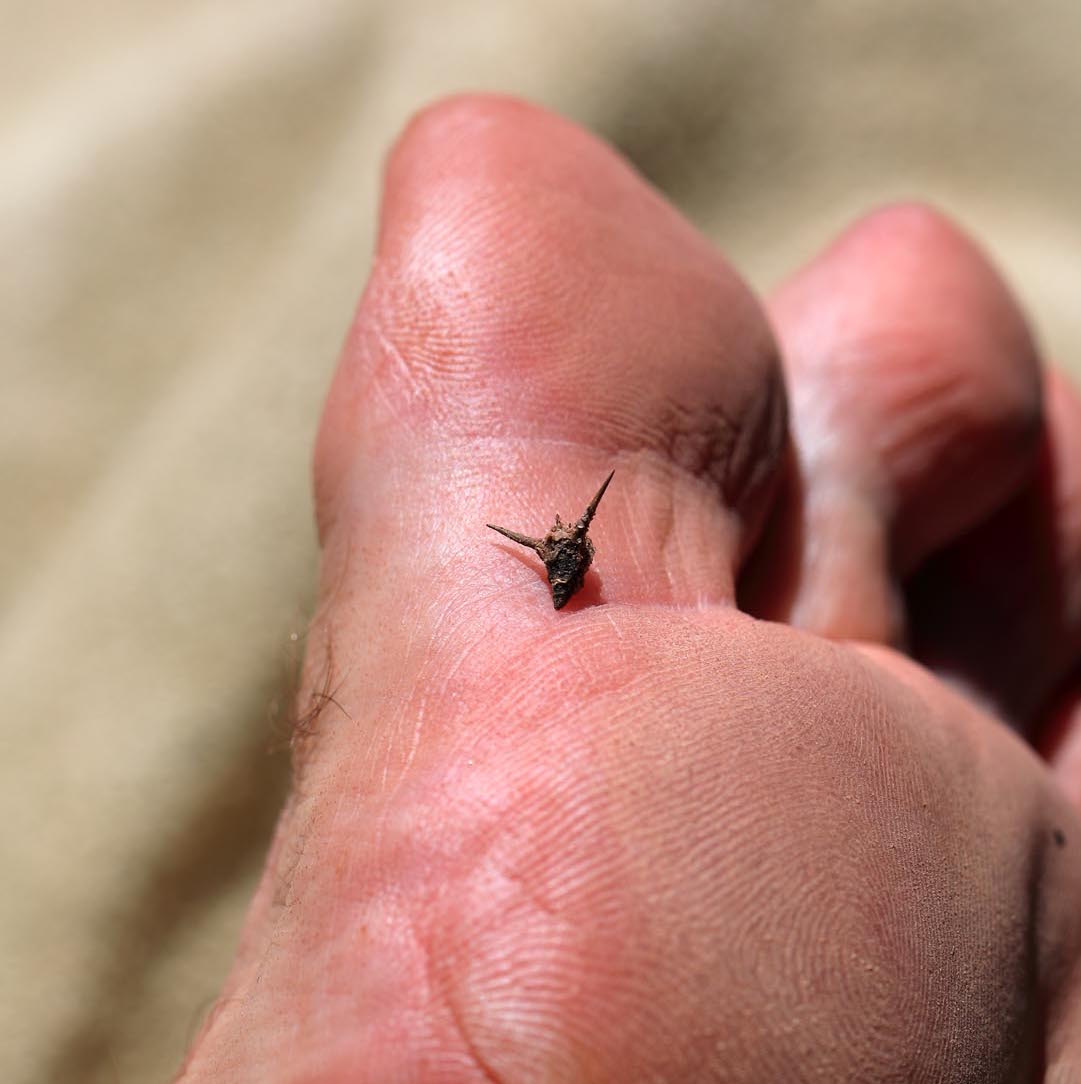Goathead stepping Tai Chi only happens literally in a few places I practice, but it happens figuratively almost every day. Weather permitting I like to practice my Tai Chi barefoot. I feel closer to the earth when my skin touches it. I can ground more completely when I can sink my whole foot into the earth.
In my desert location this means that the soft sandy areas along rivers and streams are also home to the wickedly painful stickers we call Goatheads. Why? Well, they look a bit like the head of a goat.
Horny Goatweed
Scientifically known as tribulus terrestris, there are vernacular names with more evil connotations. I like Goathead because it feels neutral and sometimes even positive to me. My wife has fond memories of growing up on a goat farm in the Canadian Rockies so sometimes finding one of these little thorns can make me smile with love for her.
Other times, my calm and serene meditative practice can suddenly become a jarringly painful exercise in distraction. That happens if I carelessly step down on one of these sharp thorns.
That’s why I turn Goathead stepping Tai Chi into an object of my practice. Properly made, the steps in Tai Chi extend carefully, as if exploring in the dark. Chapter 15 of the Tao Te Ching refers to ancient masters moving carefully as if crossing an icy stream. It’s a basic tenet of Tai Chi practice to move carefully at all times. You shift weight only when it’s clearly the correct place to move.
Center
I retain my center of gravity on my weighted foot while stepping, testing the waters, so to speak, with my unweighted foot. As I carefully begin to shift my weight, I might just feel the sharp prick of Goathead. That’s when I draw my foot back to my center – glad I didn’t commit my weight to the step until I was certain it was safe and secure. Maintaining my balance, I fold my foot until I can reach it with a hand. I then carefully remove the thorn and flick it away from my practice area. I have to be careful here too lest my hand feel the Goathead’s sting.
The careful steps have martial, physical and psychological application. They’re about not committing until the last moment, maintaining the flexibility to move in any possible direction. They’re the ultimate in safe movement because you never stress yourself by shifting your weight onto an unstable foot. Careful steps psychologically speak to balance, caution and awareness.
Goathead stepping Tai Chi practice means there’s an added challenge to seamlessly practicing my 20 plus minute form. How can I stay with my unified body sensibility while pausing to remove a Goathead? How can I step smoothly while retreating in unscheduled places? It requires an additional level of concentration as well as the understanding that all forms are just that – a series of moves strung together in a way that flows naturally so that it promotes the free flow of your own life force. As such, there’s nothing hard and fast, no religious significance or higher authority to denounce me if the Goathead stepping practice means I alter the form to accommodate my environment.
Free Flowing Practice
If you don’t practice where you encounter Goatheads you might consider yourself lucky. On the other hand you may look for ways to use your environment to enhance the meditative strength of your practice. I always try practicing in a way that enhances the spirit of free flowing life and I recommend that you seek ways to do the same.
Maintaining my flow in the midst of such little distractions helps me add a level of meditative focus that relates very well with the many distractions of everyday life. It’s one of the ways that I can more easily take the calm awareness of my Tai Chi practice session into the sometimes hectic schedule of my everyday life.
